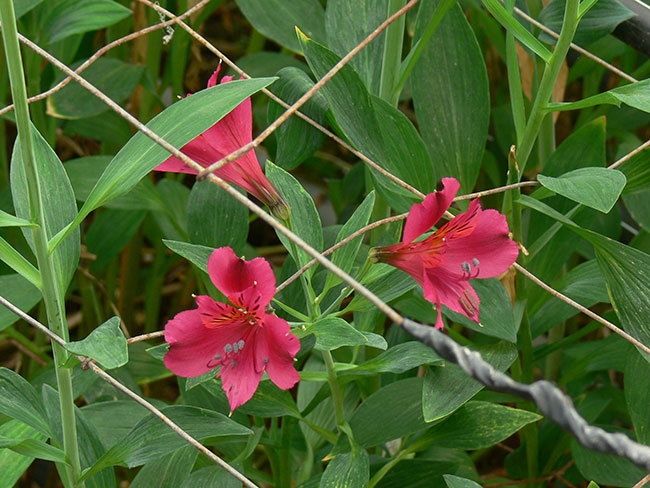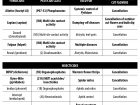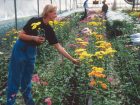
Features
Crop Protection
Inputs
Growing cut flowers is about to get more challenging
Changes to commonly used chemical products are poised to hit the cut flower industry hard.
May 14, 2018 By Cary Gates and Dr. Sarah Jandricic
 Potential pesticide de-registrations could mean increased costs per bloom or significant crop losses for growers. Photo: OMAFRA
Potential pesticide de-registrations could mean increased costs per bloom or significant crop losses for growers. Photo: OMAFRAIt seems there is never a dull moment in the greenhouse ornamental industry. From transitions to new crops, new export requirements to novel pest problems (I’m talking about YOU, mealybug!) the industry has seen a lot of change lately. And it’s not over yet.
Also on the horizon are significant changes to some commonly used chemical products. These include transformations to use patterns and outright de-registrations. Unfortunately, many of these changes are poised to hit the cut flower industry particularly hard.
The re-evaluation process
The Pest Management Regulatory Agency (PMRA), the branch of Health Canada that regulates pesticides, is mandated to review registrations periodically – typically every 15 years. Their primary goal is to ensure that registered pesticides remain safe for the public and the environment.
The PMRA is also reviewing many pesticides registered before 1995 with greater focus on human and environmental safety. Additionally, Health Canada is conducting special reviews on products where unique concerns have been identified. Neonicotinoids (due to concerns relating to pollinators and watershed habitats) are a good example of this, but are not the only chemical class under special review.
Pesticides at risk
Products used in ornamentals with upcoming registration changes are listed in Table 1. Some changes will affect all ornamental crops; bolded items will affect cut flowers only. Most of the proposed changes for potted crops are limited to use-pattern adjustments, while cut flowers face outright product cancellations.
In any product review situation, Flowers Canada Growers (FCG) works closely with registrants and the PMRA to try and keep these products in some capacity – often by recommending use changes such as increased restricted entry intervals (REI’s) or fewer allowable applications. But such compromises aren’t always considered enough to offset potential risks from continued use of a chemical.
Why cut flowers are “targeted”
Due to greater safety risks associated with increased handling in cut flower crops, the PMRA understandably holds products in this crop sub-group to a higher safety standard.
Products registered for flowers must demonstrate that they are safe for workers after application. When calculating risk, PMRA reviews “dislodgeable foliar residue” (DFR) data, to determine how much of the product could transfer to workers during regular activities. The PMRA also reviews “transfer coefficient” (TC) data. This outlines which worker activities present the highest risk of exposure – like hand-harvesting cut flowers.
In the absence of pesticide-specific data, generic risk “default” values are often used for DFR and TC limits in risk assessments. Many of the proposed product cancellations for cut flowers may be a direct result of using these harsher defaults, which may not accurately reflect worker exposure in greenhouses.
Grower response to pesticide cuts
Some growers are quite pragmatic about many of these proposed de-registrations or use-pattern changes. Generally, growers seem comfortable with losing some of the older or “high risk” chemistries. Intercept (imidacloprid), for example, has been removed from regular production by many growers voluntarily. “We answer to the [retail] chains,” says one cut flower grower, “so we have been avoiding them [neonics] for some time. And they also don’t seem all that bio friendly”. Captan is another product few growers use anymore.
For other potential de-registrations, growers agree that limiting pesticide exposure to workers is important, but their complete loss may be hard to swallow. “DDVP was used – I felt – too much when we grew mums” says the same grower. “But I also know that we like having it for emergency measures, when one needs to hit reset on a bio program.” Another grower of specialty cut flowers points out that Orthene, as a very broad-range insecticide, can be used to combat several major problems at once: “Instead of spraying or drenching several different chemicals a few days apart from each other, I can apply Orthene and be done with it”. This ultimately leads to fewer pesticide applications. Limiting applications per crop for certain products, rather than outright de-registrations, would seem to be a far better option for growers and the sustainability of the cut flower industry in Ontario.
Fungicide options seem to be the losses that will hurt the cut flower industry most. This is partly because of the long-term nature of many cut flower crops (up to three years for cut gerbera). Plants are likely to pick up a variety of diseases over their life span, and simply roguing out infected plants may not make sense if they’re still producing stems, given the high initial investment.
As one grower put it, “our industry will be…history” without products like Daconil and Rovral to combat diseases like Botrytis cinerea (grey mold), where chemical rotation is key for long-term resistance management and control. Fewer multi-site fungicides (Class “M” products), to which resistance is unlikely to develop, will lead to increased losses in marketable stems from this disease. Loss of tools to adequately control Botrytis also has the potential to damage the reputation of Canadian growers and distributors since this disease is often a post-harvest problem.
Where we go from here:
FCG and OMAFRA recognize the loss of these chemicals is significant for many farmers. Registering replacements is one way to combat potential losses. Currently, FCG is working on over 35 files for new registrations.
Securing funding to accurately determine pesticide risks to workers in greenhouses is another priority. We suspect the reality might be different than the defaults used in PMRA risk calculations for things like TC’s and DFR’s, but we need to prove it. This data may help mediate future cancellations and secure access to new tools.
In the face of the numerous proposed fungicide cancellations, improved water management is going to become increasingly important as a preventative disease control option. Current projects, like those from Drs. Ann Huber (Soil Resource Group) and Jeanine West (FCO) that focus on cost-effective, in-house water testing will help provide necessary tools to the industry. They can also provide guidance on the different water treatment options available to growers.
In terms of insect pest management, it may sound trite, but it really may be time to start investigating pesticide alternatives, like biological control, for your farm. Ontario has world-class experts that can assist you in developing insect pest management programs for your specific crop needs. Experts from OMAFRA, Vineland Research and Innovation Centre, the biocontrol industry, and private consulting companies all have years of experience in implementing biocontrol programs. You may even discover value-added benefits; employees enjoy working around crops treated with biocontrol agents, and bios can be an effective marketing tool with customers.
History has shown us that flower growers in Ontario are incredibly adaptable. Past challenges, such as insecticide resistance in pests like western flower thrips, have helped shape our industry, reducing our reliance on chemicals and making us world leaders in biological control. This new era of pesticide cancellations will no doubt present new challenges, but if anyone’s able to face them, we are.
Cary Gates is the pest management director at Flowers Canada Growers. You can reach him at Cary@fco.ca or 519-836-5495 ext. 228.
Dr. Sarah Jandricic has been the greenhouse floriculture IPM specialist for OMAFRA (Vineland station) for the last three years. She is in charge of IPM projects for insects and diseases, and runs the ONFloriculture blog. You can reach her at sarah.jandricic@ontario.ca or 905-562-4141 ext. 106.
Print this page



